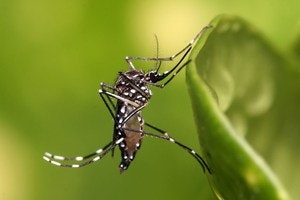UC Santa Barbara Researchers Discover Mosquitoes Use Infrared Sensors to Find Humans

In a discovery that sounds like something out of a sci-fi movie, UC Santa Barbara researchers have found that mosquitoes possess their own infrared system, similar to heat-seeking missiles, to help them locate humans.
Female mosquitoes, which require blood to develop their eggs, utilize a blend of senses to find their hosts. According to UCSB researcher Craig Montell, while carbon dioxide (CO2) from our breath and body odors are important, they aren't enough on their own. The researchers have now confirmed that mosquitoes also use infrared sensors to zero in on the body heat humans emit.
Montell explains, "Our body surface heat, at 34 degrees centigrade, emits infrared radiation. The heat is converted into electromagnetic waves, which cause local heating at neurons on the mosquito's antennae, helping them detect us." This infrared detection system is used in combination with other senses to guide mosquitoes to their next meal.
The research, recently published in the scientific journal Nature, could lead to the development of more effective mosquito repellents and traps by incorporating infrared heat. This advancement is particularly crucial as mosquitoes continue to spread deadly diseases like Eastern Equine Encephalitis and West Nile virus, which have caused serious illnesses in the eastern U.S. alone. Globally, mosquito-borne diseases were responsible for 700,000 deaths last year, according to the World Health Organization.
The UCSB research team is hopeful that by understanding how mosquitoes operate, they can better combat these dangerous pests, potentially saving lives in the process. Stay informed on the latest research and mosquito control methods to keep your family safe.
